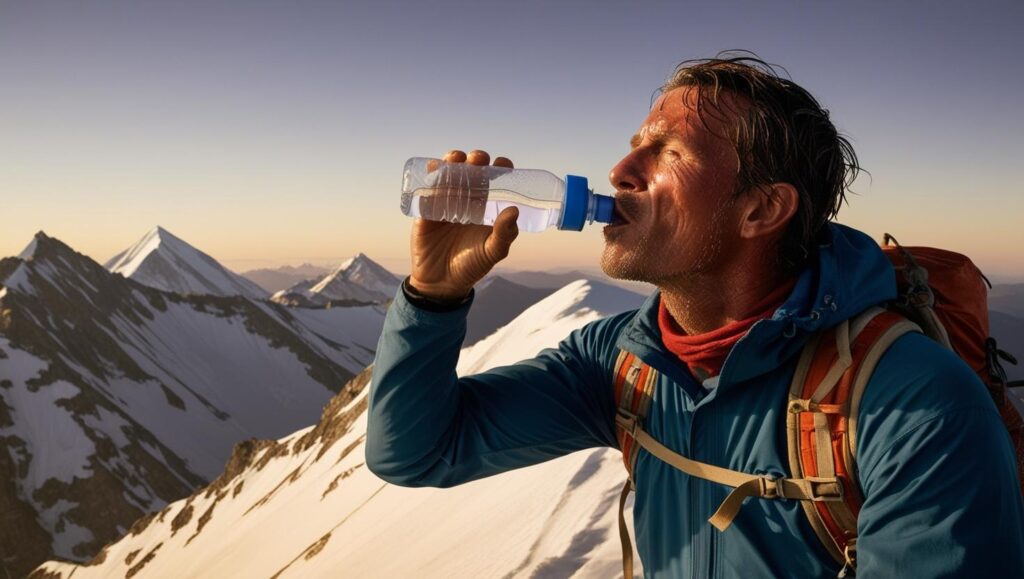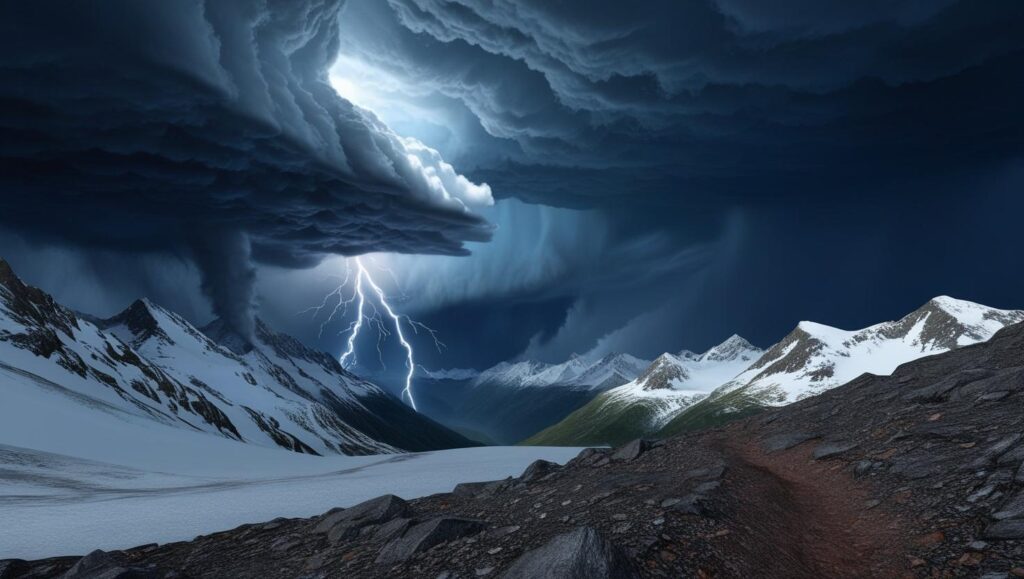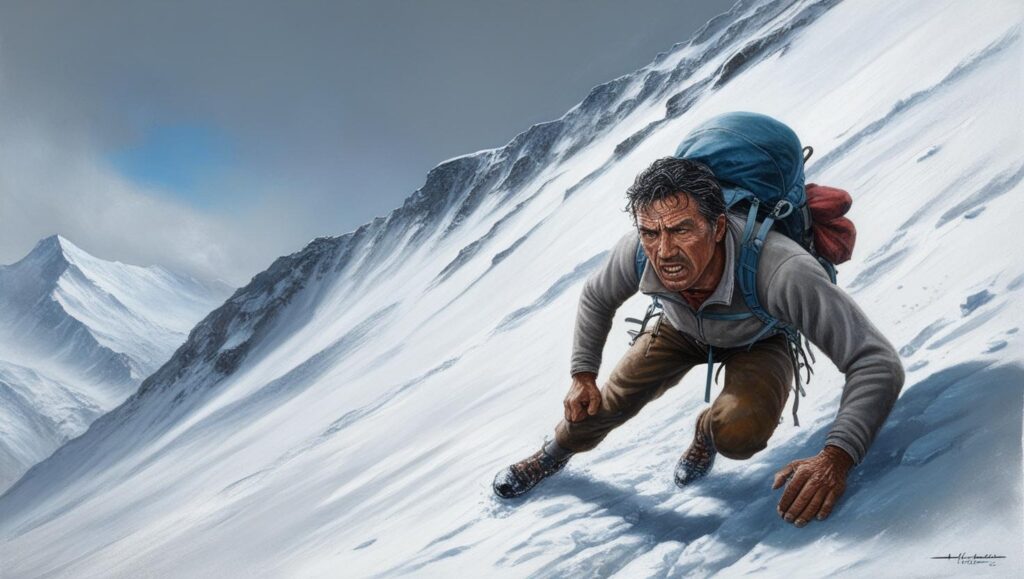Common First Summit Mistakes And How to Avoid Them
Climbing your first mountain is an unforgettable experience – but beginner climbing mistakes can turn it into a struggle. From poor planning to altitude issues, first-time climbers often fall into traps that experienced hikers know to avoid. In this guide, we’ll cover the most common first summit mistakes and share practical tips for avoiding mistakes on your first climb.

Table of contents
Introduction
Mistake 1: Ignoring Acclimatization
Mistake 2: Overpacking and Carrying Too Much Weight
Mistake 3: Not Hydrating Enough
Mistake 4: Underestimating the Weather and Terrain
The summit is finally in sight. You’ve prepared, packed, and researched every step of your mountain adventure. But there’s one thing you might not realize: the common first summit mistakes that so many first-time climbers make. Even with the best of intentions, beginner climbers often fall into traps that can derail their entire ascent – sometimes before reaching the halfway point.
Research reveals that nearly 1 in 5 beginner climbers turn back early due to avoidable errors. These climbing beginner mistakes are often caused by poor planning, overexertion, or not understanding key aspects of mountain climbing – like acclimatization, gear management, and sudden weather changes.
No worries, though! With the right preparation and insight, avoiding mistakes on your first climb is absolutely possible. Your first summit won’t just be a victory – it’ll be the start of a lifetime of high-altitude adventures. Let’s break down the top 5 beginner climbing mistakes and how to avoid them.
Mistake 1: Ignoring Acclimatization
“Why am I feeling dizzy and nauseous? I trained so hard for this!”
Story: Imagine you’re cruising up the mountain, full of energy. Suddenly, you reach a higher
altitude, and the world begins to spin. Your breath comes in short gasps, and nausea sets in. This isn’t
just exhaustion – this is altitude sickness.
It’s a Mistake: Acclimatization is often overlooked, but it’s critical. At high altitudes, the air has
significantly less oxygen, making it harder for your body to function properly. If you ascend too
quickly, your body won’t have time to adjust, leading to altitude sickness. Symptoms like headaches,
nausea, dizziness, and even more severe issues like HAPE (High Altitude Pulmonary Edema) can
quickly derail your summit attempt.
How to Avoid It: Take it slow. Follow the 300-meter rule – ascend no more than 300 meters (about
1,000 feet) per day once you hit 2,500 meters (8,200 feet). If possible, climb higher during the day
and descend to sleep at a lower altitude to let your body recover.
Quick Tip: Add rest days in between your climbs to allow your body to adjust. Acclimatization isn’t
just a suggestion – it’s a lifesaver.

Mistake 2: Overpacking and Carrying Too Much Weight
“Better safe than sorry” turns into sore shoulders and slow progress.
Story: On your first summit, excitement might cause you to overpack. Extra gear, redundant tools,
and unnecessary supplies seem like a safety net. But before you know it, your backpack weighs you
down, turning your hike into a burden instead of an adventure.
It’s a Mistake: Weight is the enemy on any climb. Every extra kilogram increases the effort needed
to move, especially in high-altitude conditions. The added weight increases energy expenditure,
making the climb significantly more difficult and even more dangerous.
How to Avoid It: Prioritize your gear. Invest in lightweight, high-quality equipment like a
lightweight tent, weather-resistant clothing, and a compact sleeping bag. Stick to the essentials – like
enough water, snacks, a first-aid kit, a headlamp, and layers for warmth. As professional
mountaineers often say, “Pack light, but pack right.”
Quick Tip: Review a gear checklist specific to your mountain, and if possible, talk to experienced
climbers who’ve done the same route to get an idea of what’s truly necessary.

Mistake 3: Not Hydrating Enough
“I feel great – until I don’t.”
Story: You’ve made it halfway, but something feels off. You’re sluggish, fatigued, and your energy
seems to have vanished. You’re reaching for that last bit of energy in your snack bars, but hydration is
just as important, if not more so, than food.
It’s a Mistake: High-altitude environments are extremely dehydrating. The air is dry, and at higher
altitudes, your body loses moisture more quickly. Even mild dehydration can lead to fatigue,
dizziness, headaches, and impaired performance. Dehydration at high altitudes can increase the risk
of altitude sickness.
How to Avoid It: Drink plenty of water before, during, and after your hike. Aim for about 3-4 liters a
day while climbing at high altitudes. Also, avoid alcohol and caffeine, as they can dehydrate you
further. Electrolyte tablets or hydration powders can help replenish essential salts and minerals, which
are lost through sweat and exertion.
Quick Tip: Use a hydration reservoir to make sipping water on the go easier. Set reminders to drink
water every 30 minutes to ensure consistent hydration.

Mistake 4: Underestimating the Weather and Terrain
“The forecast said clear skies, but now it’s snowing!”
Story: You’ve checked the weather forecast religiously, packed your gear, and everything seemed
perfect. But just hours into your hike, the weather turns. Suddenly, the skies are dark, wind gusts pick
up, and visibility drops to near zero. What now?
It’s a Mistake: Weather in the mountains can change dramatically in a matter of minutes. Thinking
that conditions will stay as predicted is a rookie error. Without the right preparation, a sudden storm
can lead to hypothermia, frostbite, or even dangerous slips on icy terrain.
How to Avoid It: Always check multiple weather sources before heading out, and be prepared for
rapid changes. Dress in layers (so you can add or remove clothing as needed), bring weather-resistant
gear, and have emergency shelter or a storm-proof tent on hand. Know when to turn back – don’t let
the summit fever cloud your judgment.
Quick Tip: Carry a weather radio or a satellite device to get weather updates when you’re on the
mountain.

Mistake 5: Pushing Too Hard and Ignoring Warning Signs
“The summit is so close, I can taste it… but my body is telling me to stop.”
Story: Summit fever is real. The closer you get to the top, the more eager you are to push through.
But sometimes, your body is sending you warning signs: dizziness, nausea, exhaustion. Ignoring
them can be deadly.
It’s a Mistake: Summit fever often blinds climbers to their body’s needs, and the desire to push
through can result in serious consequences. Ignoring these warning signs can lead to serious
consequences, including injuries, altitude sickness, and even death.
How to Avoid It: Listen to your body. If you feel lightheaded, nauseous, or too fatigued to
continue, stop. Rest, hydrate, and descend if necessary. Summits will always be there, but your health
and safety should be your top priority.
Quick Tip: Carry a climbing buddy for moral and physical support, and always communicate any
discomfort you’re feeling. Turning around doesn’t mean failure – it’s smart, safe climbing.
Final Thoughts
Climbing your first summit is an experience like no other. The key to success isn’t just about physical
strength – it’s about preparation, knowledge, and making smart decisions along the way. By avoiding
these top 5 beginner mistakes, you’ll not only improve your chances of reaching the summit but also
ensure that you do so safely and with confidence.
Remember: The mountain will always be there. Your health, well-being, and safety should be your
number one priority. Stay smart, stay hydrated, and enjoy the journey to the top!
